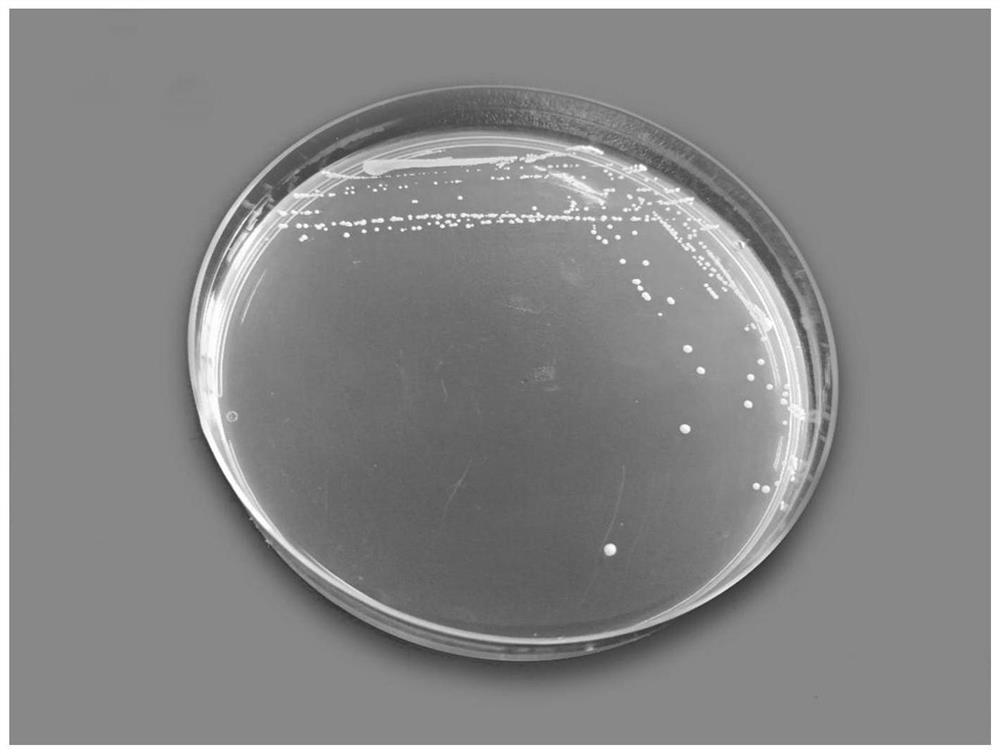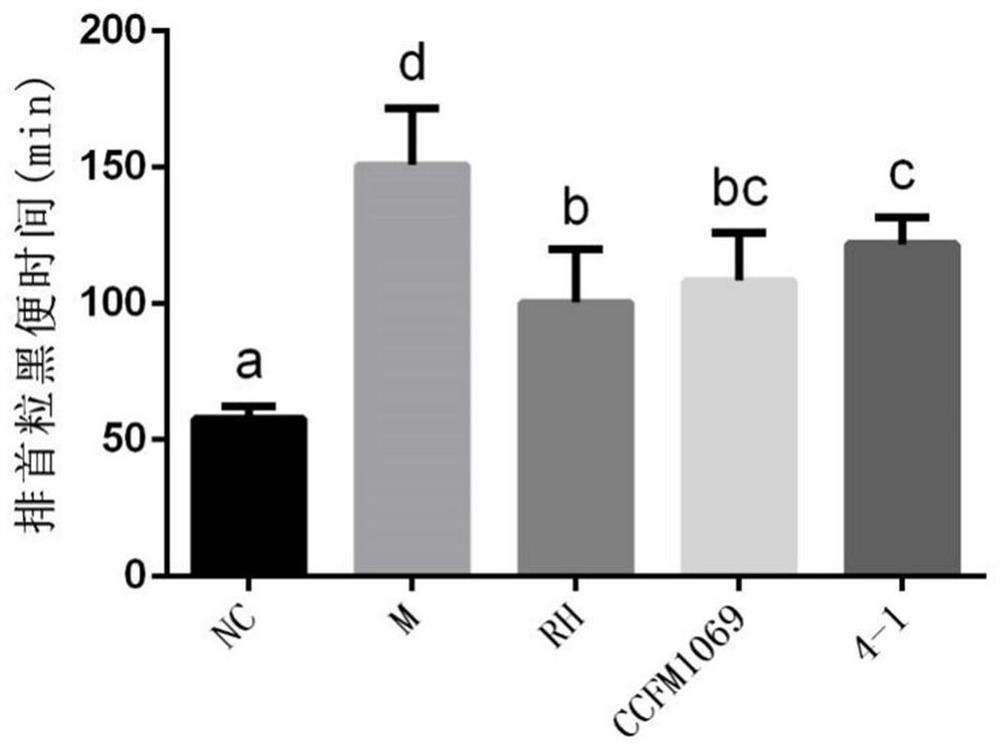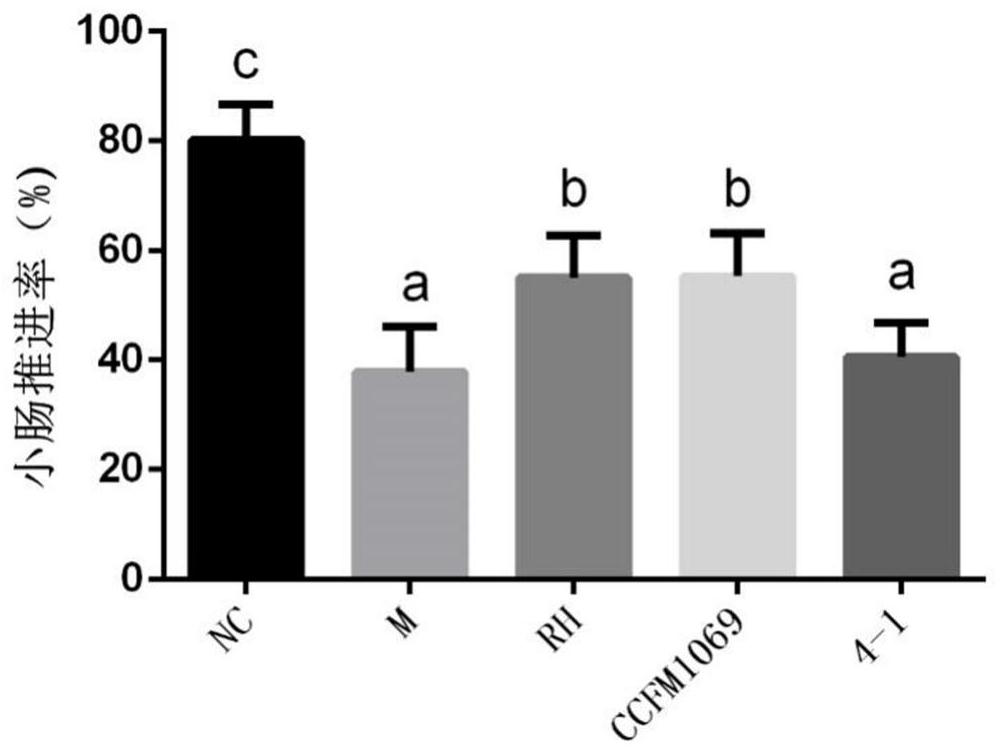Lactobacillus paracasei ccfm1069 and its application
A Lactobacillus and paracheese technology, applied in the field of microorganisms, can solve the problems of side effects and long-term use, and achieve the effects of strong adsorption capacity, alleviation of toxicity, and improvement of small intestinal propulsion rate.
- Summary
- Abstract
- Description
- Claims
- Application Information
AI Technical Summary
Problems solved by technology
Method used
Image
Examples
Embodiment 1
[0079] Example 1: Lactobacillus paracasei CCFM1069 has no toxic and side effects on BALB / C mice
[0080] The Lactobacillus paracasei CCFM1069 bacteria were resuspended in 2% sucrose solution to make a concentration of 3.0 × 10 9 CFU / mL bacterial suspension. Eight healthy male BALB / C mice with a weight of about 16-20 g were taken. After a week of acclimatization, the bacterial suspension of this concentration was given by gavage once a day, observed for one week, and the death and body weight were recorded.
[0081] The results showed that the feeding concentration was 3.0×10 9 Lactobacillus paracasei CCFM1069 at CFU / mL did not cause significant effects on mice, no significant changes in body weight, and no death. The mice showed no obvious pathological symptoms.
Embodiment 2
[0082] Example 2: Effect of Lactobacillus paracasei CCFM1069 on the first black stool in constipated mice
[0083] Lactobacillus paracasei CCFM1069 strain was taken out from the -80°C refrigerator, streaked on the MRS plate, incubated at 37°C for 48h, picked a single colony in the MRS liquid tube, incubated at 37°C for 18h, and inoculated with 2% volume. In a new MRS liquid medium, cultured at 37 °C for 18 h, and cultured for another generation in the same way, and then centrifuged the lactic acid bacteria suspension at 8000 r / min and 4 °C for 8 min, and then reconstituted with 3% sucrose solution. Suspended to obtain bacterial suspension, which was frozen at -80°C.
[0084] Thirty 6-week-old healthy male Balb / C mice were randomly divided into 5 groups: blank control group (NC), model control group (M), phenolphthalein control group (RH), and para-cheese milk. Bacillus CCFM1069 intervention group (CCFM1060), Lactobacillus paracasei 4-1 (4-1), each group contained 6 mice, the ...
Embodiment 3
[0090] Example 3: Lactobacillus paracasei CCFM1069 significantly improves the small intestine propulsion rate in constipated mice
[0091] Balb / C mice were grouped and modeled as in Example 1. On the 30th day, mice in each group were fasted and watered overnight. At 8:00 am on the 31st day, the blank group was given 0.2 ml of 3% sucrose solution, and both the model group and the bacteria perfusion group were given 0.2 ml of loperamide hydrochloride solution (10 mg / kg b.w). The four groups of bacteria gavage groups were gavaged with the ink containing their respective gavage contents. After 30 minutes, the mice were sacrificed, the abdominal cavity was opened, and the upper end was cut from the pylorus and the lower end to the cecum. The leading edge is the "ink advancement length", and the small intestine advancement rate is calculated according to the following formula.
[0092] Small intestine advancement rate (%)=(ink advancement length (cm)) / (total length of small intest...
PUM
| Property | Measurement | Unit |
|---|---|---|
| diameter | aaaaa | aaaaa |
Abstract
Description
Claims
Application Information
 Login to View More
Login to View More - Generate Ideas
- Intellectual Property
- Life Sciences
- Materials
- Tech Scout
- Unparalleled Data Quality
- Higher Quality Content
- 60% Fewer Hallucinations
Browse by: Latest US Patents, China's latest patents, Technical Efficacy Thesaurus, Application Domain, Technology Topic, Popular Technical Reports.
© 2025 PatSnap. All rights reserved.Legal|Privacy policy|Modern Slavery Act Transparency Statement|Sitemap|About US| Contact US: help@patsnap.com



